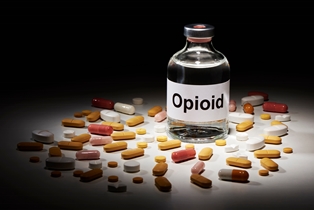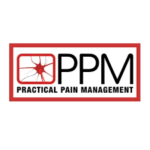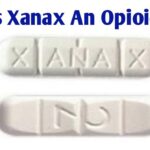How to Calculate Opioid Conversions

All opioids are chemically related and interact with opioid receptors on nerve cells in the body and brain. Opioid pain relievers are generally safe when taken for a short time and as prescribed by a doctor, but because they produce euphoria in addition to pain relief, they can be misused (taken in a different way or in a larger quantity than prescribed, or taken without a doctor’s prescription). Regular use—even as prescribed by a doctor—can lead to dependence and, when misused, opioid pain relievers can lead to addiction, overdose incidents, and deaths.
Opioids are an important tool in the management of acute and chronic (cancer and non-cancer) pain. Pain and palliative care practitioners are frequently called upon to switch a patient from one opioid regimen to a different regimen either to gain better pain control, to minimize opioid-related adverse effects, to overcome opioid tolerance, or due to a change in patient status.
Prescribing opioids for chronic pain
The Centers for Disease Control and Prevention (CDC) issued recommendations for prescribing opioids for chronic pain. The recommendations included the following:
- Nonpharmacologic therapy and nonopioid pharmacologic therapy are preferred for chronic pain. Clinicians should consider opioid therapy only if expected benefits for both pain and function are anticipated to outweigh risks to the patient. If opioids are used, they should be combined with nonpharmacologic therapy and nonopioid pharmacologic therapy, as appropriate.
- Before starting opioid therapy for chronic pain, clinicians should establish treatment goals with all patients, including realistic goals for pain and function, and should consider how opioid therapy will be discontinued if benefits do not outweigh risks. Clinicians should continue opioid therapy only if there is clinically meaningful improvement in pain and function that outweighs risks to patient safety.
- Before starting and periodically during opioid therapy, clinicians should discuss with patients known risks and realistic benefits of opioid therapy and patient and clinician responsibilities for managing therapy.
- When starting opioid therapy for chronic pain, clinicians should prescribe immediate-release opioids instead of extended-release/long-acting (ER/LA) opioids.
- When opioids are started, clinicians should prescribe the lowest effective dosage. Clinicians should use caution when prescribing opioids at any dosage, should carefully reassess evidence of individual benefits and risks when considering increasing the dosage to ≥50 morphine milligram equivalents (MME)/day, and should avoid increasing the dosage to ≥90 MME/day or carefully justify a decision to titrate dosage to ≥90 MME/day.
- Long-term opioid use often begins with treatment of acute pain. When opioids are used for acute pain, clinicians should prescribe the lowest effective dose of immediate-release opioids and should prescribe no greater quantity than needed for the expected duration of pain severe enough to require opioids. Three days or less will often be sufficient; more than 7 days will rarely be needed.
- Clinicians should evaluate benefits and harms with patients within 1-4 weeks of starting opioid therapy for chronic pain or of dose escalation. Clinicians should evaluate benefits and harms of continued therapy with patients every 3 months or more frequently. If benefits do not outweigh harms of continued opioid therapy, clinicians should optimize other therapies and work with patients to taper opioids to lower dosages or to taper and discontinue opioids.
- Before starting and periodically during continuation of opioid therapy, clinicians should evaluate risk factors for opioid-related harms. Clinicians should incorporate, into the management plan, strategies to mitigate risk, including considering offering naloxone when factors that increase risk for opioid overdose, such as history of overdose, history of substance use disorder, higher opioid dosages (≥50 MME/day), or concurrent benzodiazepine use, are present.
- Clinicians should review the patient’s history of controlled substance prescriptions using state prescription drug monitoring program (PDMP) data to determine whether the patient is receiving opioid dosages or dangerous combinations that put him or her at high risk for overdose. Clinicians should review PDMP data when starting opioid therapy for chronic pain and periodically during opioid therapy for chronic pain, ranging from every prescription to every 3 months.
- When prescribing opioids for chronic pain, clinicians should use urine drug testing before starting opioid therapy and consider urine drug testing at least annually to assess for prescribed medications as well as other controlled prescription drugs and illicit drugs.
- Clinicians should avoid prescribing opioid pain medication and benzodiazepines concurrently whenever possible.
- Clinicians should offer or arrange evidence-based treatment (usually medication-assisted treatment with buprenorphine or methadone in combination with behavioral therapies) for patients with opioid use disorder.
Steps for converting or rotating between opioids
See the list below:
- Calculate total mg dose taken in past 24-hours.
- Determine equi-analgesic dose (Table 1).
- If pain is controlled on current opioid, reduce the new opioid daily dose by 25-50% to account for cross-tolerance, dosing ratio variation, and interpatient variability.
- If pain is uncontrolled on the current opioid, increase opioid daily dose by up to 100-125%.
- Titrate liberally and rapidly to analgesic effect during first 24 hours.
- Monitor for adverse events and effectiveness.
- Reassess the analgesic effect every 2-3 days.
Table 1. Opioid Equi-analgesic Doses
| Opioid Agonist | Parenteral Dose, IV, SC, IM | Oral Dose | PO:IV | Duration of Action, h |
| Morphine | 10 mg | 30 mg | 3:1 | 3-4 |
| Morphine, long-acting (Avinza, Kadian) | – | 30 mg | – | 12 |
| HYDROmorphone (Dilaudid) | 1.5 mg | 7.5 mg | 5:1 | 2-3 |
| OXYcodone (Oxecta) | – | 15-20 mg | – | 3-5 |
| OXYcodone, long-acting (OxyContin) | – | 20 mg | – | 12 |
| HYDROcodone (Vicodin, Lortab) | – | 30-45 mg | – | 3-5 |
| OXYmorphone (Opana) | 1 mg | 10 mg | 10:1 | 3-6 |
| OXYmorphone, long-acting (Opana ER) | – | 10 mg | – | 12 |
| Codeine | – | 180-200 mg | – | 4 |
| Fentanyl* | 0.2 mg (200 mcg) | – | – | 2 |
| Methadone** | – | – | – | – |
| *See Table 2 for transdermal fentanyl conversion **Methadone dosing: always consult pain or palliative care specialist |
Transdermal fentanyl
Conversion from morphine (or equivalent) to fentanyl transdermal:
- Calculate the total 24-hour morphine dose (or morphine-equivalent).
- Select microgram per hour dose of transdermal fentanyl based on Table 2.
- Decrease new dose 30-50% to allow for incomplete cross-tolerance.
- Manage breakthrough pain with morphine/short-acting opioid PRN.
- Titrate patch to effect every 72 hours.
Table 2. Conversion of Opioid Analgesics to Fentanyl Transdermal
| Current Opioid Analgesic | Daily Dosage (mg/d) | |||
| Morphine PO | 60-134 | 135-224 | 225-314 | 315-404 |
| Morphine IV/IM | 10-22 | 23-37 | 38-52 | 53-67 |
| Oxycodone PO | 30-67 | 67.5-112 | 112.5-157 | 157.5-202 |
| Oxycodone IV/IM | 15-33 | 33.1-56 | 56.1-78 | 78.1-101 |
| Codeine PO | 150-447 | 448-747 | 748-1047 | 1048-1347 |
| Hydromorphone PO | 8-17 | 17.1-28 | 28.1-39 | 39.1-51 |
| Hydromorphone IV | 1.5-3.4 | 3.5-5.6 | 5.7-7.9 | 8-10 |
| Meperidine IM | 75-165 | 166-278 | 279-390 | 391-503 |
| Methadone PO | 20-44 | 45-74 | 75-104 | 105-134 |
| Methadone IM | 10-22 | 23-37 | 38-52 | 53-67 |
| – | Recommended fentanyl transdermal dose (q72h) | |||
| Fentanyl transdermal (Duragesic) | 25 mcg/h | 50 mcg/h | 75 mcg/h | 100 mcg/h |
Fentanyl transdermal cautions
See the list below:
- Transdermal fentanyl is NOT recommended for breakthrough or unstable pain requiring frequent dosage adjustments.
- Patches MUST NOT be used in opioid-naïve patients; they are indicated only for patients who are opioid tolerant.
- Do not apply any external heat to patch; heat may increase absorption and increase risk of overdose.
PRN dosing for breakthrough pain
See the list below:
- Augment around-the-clock scheduled opioid doses with PRN doses of short-acting opioids for acute exacerbation of chronic pain.
- Short-acting opioid doses are approximately 10-20% of total 24-hour scheduled opioid dose (eg, 24-hour scheduled morphine totals 150 mg, therefore give short-acting morphine 15 mg PO q1h PRN for breakthrough pain).
- Reassess efficacy and adverse effects at 60 minutes.
- If the pain score is unchanged or increased, increase PRN dose 50-100%.
- If the pain score is decreased, continue current effective PRN dose.
Fentanyl transmucosal or intranasal spray for breakthrough cancer pain
See the list below:
- Transmucosal or intranasal spray fentanyl should not be used in opioid-naïve patients.
- Initiate dosing cautiously in the chosen formulation and titrate to effect.
- Do not exceed more than 2 doses per breakthrough episode.
- Consider increasing 24-hour scheduled opioid therapy if more than 4 breakthrough episodes occur in a day.
Opioid rotation
Introduction
- Of cancer patients receiving active cancer treatment, 33% experience severe pain but 30% do not receive adequate pain treatment.
- Opioids do not have a ceiling effect or uniform plasma levels, so individual titration required.
- Intolerable side effects along with inadequate analgesia contribute in 10-30% of patients treated with oral morphine for pain.
- After initiation and titration, the initial clinical efficacy may gradually decline. Then higher doses may have undesirable side-effects, and rotation can be considered.
Indications
- Unmanageable side effects during dose titration
- Poor analgesia despite dose titration
- Alternate route of administration needed
- Change in clinical status requires different pharmacokinetics (eg, renal insufficiency or hepatic dysfunction)
- Cost or financial considerations
- Drug availability issues
- Interactions between drugs
- Most commonly done for poor opioid responsiveness
- Specific mechanisms by which it improves overall response is unknown; likely from large individual variation to different agents and the phenomenon of incomplete cross-tolerance
Equianalgesic dose tables
- Opioid dose requirements can vary in the clinical setting as much as 40-fold.
- Equianalgesic dose defined as the dose in steady state providing the same analgesic response. This has been standardized to 10 mg of parental morphine in most studies.
- First equianalgesic dose table published more than 40 years ago, and remain with little variation.
- Items that may influence relative potencies:
- Major organ dysfunction, particularly renal and hepatic impairment, but also adrenal insufficiency, hypothyroidism, and abnormal levels of protein binding
- Demography, including race, age, and gender
- Most trials were short term trials of acute postoperative pain or in cancer pain with low dose opioids
- All new treatment should be considered a trial until it is found to be analgesically effective with acceptable side-effect profile.
- No evidence-based guidelines for opioid choices with rotation.
- Rotation in cancer patients regains satisfactory pain control and/or reduced side effects in 50-70% of patients.
- In cancer population, 80% of patients required one switch, 44% 2 or more, 20% 3 or more.





